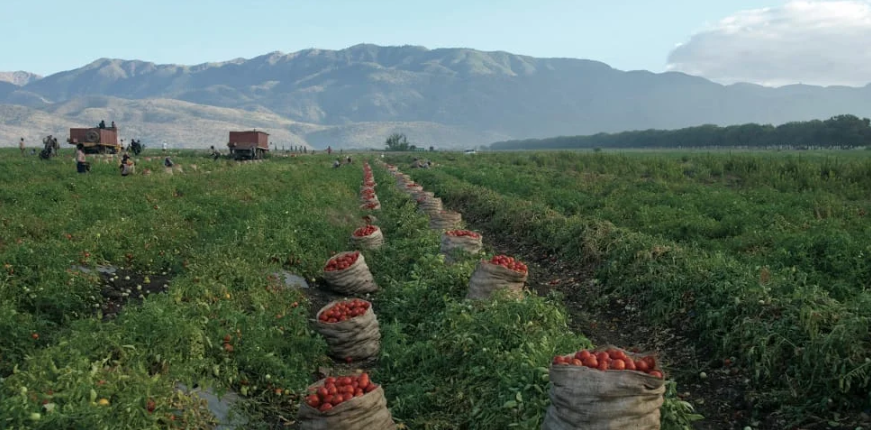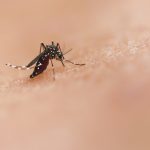Reported new blight threatens tomato crop in the South

The Dominican Association of Agronomists (ADIA) denounced yesterday that around 20 thousand tasks planted with tomatoes run the risk of being lost due to a plague that is affecting that product in Haiti and that could cross into Dominican territory, especially in the South Zone.
In this regard, they called on the Ministry of Agriculture to offer the necessary help to avoid the total loss of the harvest and that dozens of families living from the production of tomatoes go bankrupt.
The ADIA leaders, led by its Regional South president, Buenaventura González; Luis Féliz, César Céspedes, Adriano Jiménez, in charge of the Rural Department, of the Regional of Agriculture and the veterinarian Álvaro Féliz, expressed their concern because the plague known as the “tomato moth,” decimates the harvest and can lead to the ruin of over six thousand families.
They explained that this plague has already caused destruction in Haiti, where the production of tomatoes was significantly affected and they fear that the same thing can happen in the DR if that plague manages to reach the crops of the South zone.
Adriano Jiménez, in charge of the Rural Department of the Regional Agriculture in Barahona, speaking during a press conference at the headquarters of the Ecological Society of Barahona, said that it is not a problem that falls exclusively to the Ministry of Agriculture, but to society in a general sense, for which he called professionals of the agricultural sector to articulate with the competent authority with the purpose of forming a “border quarantine surveillance network.”
He warned that this is a situation that would not only affect the southern part of the country but could extend to another area of the Dominican Republic, which would further aggravate the situation and lead to the bankruptcy of an important productive sector of the nation.
Jiménez further explained that another consequence to which the country is exposed is to lose the tomato export market, which has a niche as important as that of the United States and other nations.
Meanwhile, César Céspedes, former regional director of the Dominican Coffee Institute (INDOCAFE), said that this plague would not only affect the tomato that is sown to be industrialized but also the lettuce.
Weakness in the border area
The leaders of the Dominican Association of Agronomists (ADIA), said that the country has many weaknesses in terms of controlling the entry of agricultural and animal products into the border area, which makes the situation much more complicated.
They questioned that fruits, vegetables, and animals pass to this side of the island without the slightest control or surveillance, so they suggest that the government, through the Ministry of Agriculture, put more effort to avoid these entries.
“The State has a quarantine system, what there is is that, together with the network, we join together to reinforce it and that this plague does not reach us, precisely on the date when we are already in the planting of the tomato industry,” said the engineer agronomist Luis Féliz.
Economy
For his part, Buenaventura González recalled that the country’s economy depends, in large part, on the growth of agricultural production and the export of items of agricultural origin, but “our borderline is one of the most vulnerable economic zones because of the intense flow of migrants transiting through it.”
He noted that it is a flow, often chaotic, which could facilitate the entry of the plague that affects the tomato plantations of the neighboring country.
He recalled that in the recent past the country recorded “multimillion-dollar” losses as a result of the emergence of the fearsome Mediterranean Fly (Ceratitis capitata), which is why it invites agricultural professionals to become a promoter for compliance with “our sanitary regulations.”
“We must pay due attention to this issue because we are facing the real possibility that in the near future another quarantine pest will enter the country, which has been detected in tomato plantations in Haiti, that is, the tomato moth ( in Latin Tuta absoluta),” he quoted.
The tomato moth: symptoms and damage
The moth of the adult tomato (Tuta absoluta) lays about 260 eggs, which are cylindrical, the color varies from creamy white to bright yellow, darkening in the embryonic phase until they are almost black before hatching.
First stage larvae are whitish to yellowish upon emergence. They make tunnels within the leaves, stems, and fruits. In the second to fourth stages, they turn green with a black band behind the head.
The pupae of the tomato moth are lighter in color than the larvae they eat and have a characteristic pink color on the dorsal surface. The worms temporarily venture out of the tunnels of the leaves or fruits.


















